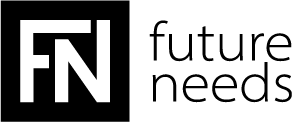Building the ideal consortium for an EU-funded project is much like recruiting the perfect employee. It demands precision, alignment, and foresight. At Future Needs, we understand that strong partnerships are the backbone of successful European research and innovation ventures. Just as great companies thrive by hiring the right talent, your EU project depends on identifying and integrating the right consortium partners.
Below, we outline a strategic, step-by-step process to help you find, evaluate, and formalise partnerships that elevate your EU project proposal from promising to outstanding.
1. Define Your Ideal Partner Profile (Think: Job Description)
A well-crafted job description attracts the right candidate. Likewise, defining the exact role and expertise needed from a consortium partner streamlines your search. Before you begin outreach, consider:
- What core competencies are critical to your project’s success? (e.g., AI, climate adaptation, policy expertise)
- Are you looking for a specific type of organisation? (e.g., university, SME, NGO, public authority)
- What geographical considerations apply? Are there any eligibility or diversity criteria from the funder?
- What role will this partner play? (e.g., leading work packages, piloting solutions, dissemination activities)
Why it matters:
Clearly defined partner roles reduce overlap, increase accountability, and help evaluators understand how your consortium functions as a cohesive whole. This clarity also helps potential partners decide quickly whether they are a good fit, making your recruitment process more efficient.
2. Start with Your Existing Network (Think: Tested Collaborations)
Hiring from within your trusted circle often leads to the most reliable outcomes. The same principle applies to consortium building. Start by reaching out to people and organisations you’ve already worked with successfully:
Reach out to:
- Former EU project collaborators
- Visiting academics and guest lecturers
- Alumni from shared initiatives, joint papers, or consortiums
- Co-authors, thesis supervisors, or research peers
Why this approach works:
- Trust and communication styles are already established
- There’s a shared understanding of workflows and expectations
- Collaboration risk is significantly reduced compared to unknown entities
Think of it as re-hiring a trusted team member: the onboarding is quicker, alignment is smoother, and your chances of long-term success are much higher.
3. Expand Through Referrals (Think: Second-Degree Connections)
Your network’s network is a hidden goldmine. Tapping into second-degree contacts can surface high-quality partners who may not be visible via traditional searches.
Ask:
- Colleagues in research, academic, or professional circles
- Contacts at universities, research centers, or innovation hubs
- Former Erasmus+, LIFE, or Horizon project partners
What to ask for:
- “Do you know any organizations strong in renewable energy outreach?”
- “Who in your network is excellent at urban mobility pilots?”
Why this approach works:
Referrals come with social proof. When someone vouches for a potential partner’s expertise and reliability, it reduces your due diligence burden and increases response rates. It’s the project world’s version of employee referrals, which are statistically more effective in hiring.
4. Search Smartly Online and Offline (Think: Matchmaking Platforms & Events)
Like scanning CVs and attending job fairs, smart searching across official and curated platforms is key.
Use the following tools:
- EU Funding & Tenders Portal:: Offers filters by topic, country, and organisation type. Search for organisations with strong track records in your field.
- EURAXESS Partnering Portal: Especially strong for academic and research institutions.
- Enterprise Europe Network: Ideal for identifying innovative SMEs and business-oriented partners.
Attend official EU matchmaking events, including:
- Horizon Europe Info Days: Thematic events that highlight specific calls and enable direct contact with interested applicants.
- Networking and Brokerage Events: Both virtual and in-person, these events facilitate fast, targeted meetings between potential consortium members across sectors.
Pro tip:
After identifying leads on platforms, follow up with tailored emails that include a concept note or one-pager including:
- your project’s title,
- objectives,
- partner role, and
- anticipated benefits.
Treat it like a pitch to a top-tier candidate.
5. Promote Your EU Partnership Opportunity (Think: Social Media & Outreach)
Just as job listings attract talent, broadcasting your partner search can bring in unexpected but excellent applicants.
Where to post:
- LinkedIn: Share in personal updates, Horizon Europe groups, or direct messages.
- ResearchGate: Connect with academic peers, especially for R&I-heavy proposals.
- University bulletin boards, professional associations, and specialist newsletters (e.g., transport innovation, water management)
What to include:
- Brief project overview
- Specific expertise sought
- Timeline and expected role
- Contact instructions
Email Outreach Tips:
- Personalized, concise messages explaining why you’re reaching out are key.
- Link to a project brief or concept note.
- Ask to set up a call.
Benefits:
- Widens your pool of candidates
- Attracts partners already engaged in your topic area
- Demonstrates leadership and initiative
6. Vet EU Project Partners for Compatibility (Think: The Interview Phase)
Once you have potential matches, it’s time to assess fit. Much like interviews in hiring, this is where you check for alignment on goals, work ethics, and capabilities.
Topics to explore in calls:
- Their past experience with EU-funded projects
- Team composition and technical capacity
- Contribution interest and availability
- Values, communication style, and flexibility
Sample questions:
- “Tell us about a previous Horizon Europe role you’ve played.”
- “How does your team manage deadlines in multi-partner projects?”
- “What’s your capacity over the next 12 months?”
Watch for:
- Gaps in experience
- Misaligned expectations
- Overcommitment or low engagement
Pro Tip: Ask for references or project examples. Even a 10-minute discussion with a previous partner can reveal invaluable insights.
7. Formalise Agreements (Think: Offer & Onboard)
You’ve found the right partners. Now protect the relationship and clarify expectations with formal documents.
Key documents:
- Letter of Intent (LOI): Confirms willingness to join the proposal
- Memorandum of Understanding (MoU): Outlines contributions, roles, and IP basics
- Non-Disclosure Agreement (NDA): For early idea sharing
- Exclusivity Agreement: Prevents double participation in competing consortia
Why this matters: Formalising early signals professionalism, protects intellectual assets, and creates accountability before the proposal is even submitted.
Project coordination tip: Centralise signed documents in a shared cloud folder and update partners regularly about next steps.
Consortium Building Step |
Hiring Process Parallel |
| 1. Define the Expertise Needed Example: For a smart city project, we need a partner specializing in AI-driven traffic management and another in sustainable urban planning. | Craft the Job Description Example: We need a Senior Software Engineer with expertise in Python, machine learning, and cloud infrastructure. |
| 2. Research Potential Partners Example: Searching the EU Funding & Tenders Portal for organizations with strong track records in smart grid technology. | Explore Talent Pools Example: Reviewing LinkedIn profiles of candidates with relevant experience in data analytics and project management. |
| 3. Post Opportunities and Network Example: Posting an Expression of Interest for a health tech consortium on EU platforms and industry forums. | Advertise the Vacancy Example: Posting a job opening for a Marketing Manager on Indeed and LinkedIn. |
| 4. Leverage Existing Networks Example: Asking a former colleague if they know any universities with strong sustainable construction research. | Use Employee Referrals Example: Asking current team members for referrals to fill a sales position. |
| 5. Engage with Academic Institutions Example: Attending a conference to identify partners for an aviation project. | Recruit from Internship Pools Example: Visiting a university career fair to scout promising computer science students. |
| 6. Utilize Policy and Industry Contacts Example: Contacting a national/european cluster for recommendations on industrial partners. | Hire from Professional Networks Example: Reaching out to a contact at a peer company about senior-level candidates. |
| 7. Evaluate Compatibility Example: Holding a virtual meeting with a potential partner to assess values, working styles, and goals. | Conduct Interviews Example: Interviewing a candidate to assess fit, skills, and team synergy. |
| 8. Formalize the Partnership Example: Drafting an MoU that outlines responsibilities, roles, and IP arrangements. | Extend the Job Offer Example: Sending a formal offer letter with salary, terms, and expectations. |
Looking for help to build a winning consortium?
Future Needs is here to help you navigate Horizon Europe calls, match with ideal tested commercial partners and excellent scientists, and submit standout proposals. Book a free consultation with our experts at Future Needs today.
Follow us on LinkedIn to stay informed about the latest Horizon Europe and Erasmus+ developments and subscribe to our newsletter for expert highlights from the EU research and innovation landscape, delivered straight to your inbox.
FAQ: Frequently Asked Questions on Finding EU Project Partners
Q1: How do I find partners for Horizon Europe projects?
Use the EU Funding & Tenders Portal, LinkedIn, EURAXESS, and Enterprise Europe Network. Attend Info Days and brokerage events to meet potential collaborators. Ask a consultant with a broad network of partners to match you with the right partner.
Q2: What should I look for in a project partner?
Relevant experience, communication reliability, past EU project success, capacity to deliver, and shared values.
Q3: Can I use LinkedIn to find EU project collaborators?
Yes. LinkedIn is highly effective. Post opportunities, engage in groups, and message directly.
Q4: When should I formalise the partnership?
As soon as mutual interest is established. Sign an LOI or MoU before proposal submission.
Q5: What if I’ve never worked with the partner before?
Start with a call. Use reference checks and NDAs. Ensure clear role definitions early. Ask for referrals from common connections.
Q6: How many partners should a strong consortium have?
Depends on the call. Aim for balanced diversity (academic, industrial, policy, end-users) with clear complementary skills.
About the authors

Anna Palaiologk, the founder of Future Needs, is a Research & Innovation Consultant with 18 years of experience in proposal writing and project management. She has worked as a project Coordinator and Work Package leader in 30+ EU projects and has authored 50+ successful proposals. Her research background is in economics, business development and policy-making. Email Anna at anna@futureneeds.eu.

Chariton Palaiologk, the Head of the EU Project Management Team, is currently leading the project management of 10+ EU-funded projects. He has a background in data analysis and resource optimisation, having worked at the Greek Foundation for Research and Technology. Email Chariton at chariton@futureneeds.eu.


